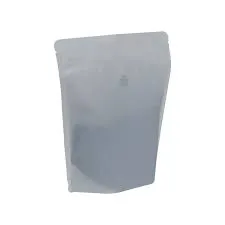- Afrikaans
- Albanian
- Amharic
- Arabic
- Armenian
- Azerbaijani
- Basque
- Belarusian
- Bengali
- Bosnian
- Bulgarian
- Catalan
- Cebuano
- chinese_simplified
- chinese_traditional
- Corsican
- Croatian
- Czech
- Danish
- Dutch
- English
- Esperanto
- Estonian
- Finnish
- French
- Frisian
- Galician
- Georgian
- German
- Greek
- Gujarati
- haitian_creole
- hausa
- hawaiian
- Hebrew
- Hindi
- Miao
- Hungarian
- Icelandic
- igbo
- Indonesian
- irish
- Italian
- Japanese
- Javanese
- Kannada
- kazakh
- Khmer
- Rwandese
- Korean
- Kurdish
- Kyrgyz
- Lao
- Latin
- Latvian
- Lithuanian
- Luxembourgish
- Macedonian
- Malgashi
- Malay
- Malayalam
- Maltese
- Maori
- Marathi
- Mongolian
- Myanmar
- Nepali
- Norwegian
- Norwegian
- Occitan
- Pashto
- Persian
- Polish
- Portuguese
- Punjabi
- Romanian
- Russian
- Samoan
- scottish-gaelic
- Serbian
- Sesotho
- Shona
- Sindhi
- Sinhala
- Slovak
- Slovenian
- Somali
- Spanish
- Sundanese
- Swahili
- Swedish
- Tagalog
- Tajik
- Tamil
- Tatar
- Telugu
- Thai
- Turkish
- Turkmen
- Ukrainian
- Urdu
- Uighur
- Uzbek
- Vietnamese
- Welsh
- Bantu
- Yiddish
- Yoruba
- Zulu
adobe color pantone
Exploring Adobe Color and Pantone A Journey Through Color Theory and Design
Color is a fundamental aspect of design, influencing emotions, behaviors, and perceptions. In the realm of graphic design, two names that stand out are Adobe Color and Pantone. Both play crucial roles in how color is utilized, understood, and applied in various creative industries. This article delves into the significance of these tools and systems, examining their impact on design.
Understanding Adobe Color
Adobe Color, formerly known as Adobe Kuler, serves as an online color palette generator and community. Users can create, share, and explore color schemes that can be leveraged in their design projects. One of its standout features is the ability to generate color palettes based on color theory rules, such as analogous, monochromatic, complementary, and triadic color schemes. This feature empowers designers to work with harmonious color combinations that enhance the visual appeal of their projects.
Moreover, Adobe Color integrates seamlessly with other Adobe Creative Cloud applications, making it easy for designers to apply their chosen palettes within tools like Photoshop, Illustrator, or InDesign. This integration simplifies the workflow, allowing for efficient design processes. The platform also features a vibrant community where users can inspire one another by sharing their palettes, thus fostering creativity and collaboration.
The Pantone System A Color Language
Pantone, on the other hand, is a renowned color matching system widely used in various industries, particularly in print and fashion. The Pantone Matching System (PMS) provides unique identifiers for specific colors, allowing designers to ensure consistency across different production processes and materials. This is especially critical when working in industries where color precision is paramount, such as branding and packaging.
adobe color pantone

One of the most well-known aspects of Pantone is its annual Color of the Year announcement, which influences design trends across multiple sectors. Each year, the Pantone Color Institute analyzes global trends and cultural movements to select a color that captures the spirit of the times. This color often becomes a central theme in fashion, interior design, and graphic design, showcasing the wide-reaching impact of color choice.
The Intersection of Adobe Color and Pantone
While Adobe Color and Pantone exist independently, they complement each other in powerful ways. Designers can create a color palette using Adobe Color and then match those colors to Pantone swatches for print applications. This ensures that the digital designs retain their intended look when translated into physical products. By understanding color theory and leveraging tools from both Adobe Color and Pantone, designers can achieve precision in their work and ensure that colors communicate the right message.
The Psychological Impact of Color
Color isn’t just an aesthetic choice; it has psychological implications as well. Different colors evoke different feelings and associations. For instance, blue often conveys trust and professionalism, making it a popular choice for corporate branding. In contrast, yellow can evoke feelings of happiness and energy. By using Adobe Color and Pantone, designers can ensure the colors they choose align with the desired emotional response they wish to elicit from their audience, enhancing the overall effectiveness of their designs.
Conclusion
In conclusion, both Adobe Color and Pantone are essential tools for designers looking to navigate the complex world of color. Adobe Color’s user-friendly palette generation and community sharing foster creativity, while Pantone’s precise color matching ensures consistency and reliability across various mediums. Together, they empower designers to make informed decisions about color, enhancing their work's overall impact and effectiveness. As the design landscape continues to evolve, understanding and utilizing these tools will be crucial in creating visually stunning and emotionally resonant designs.













